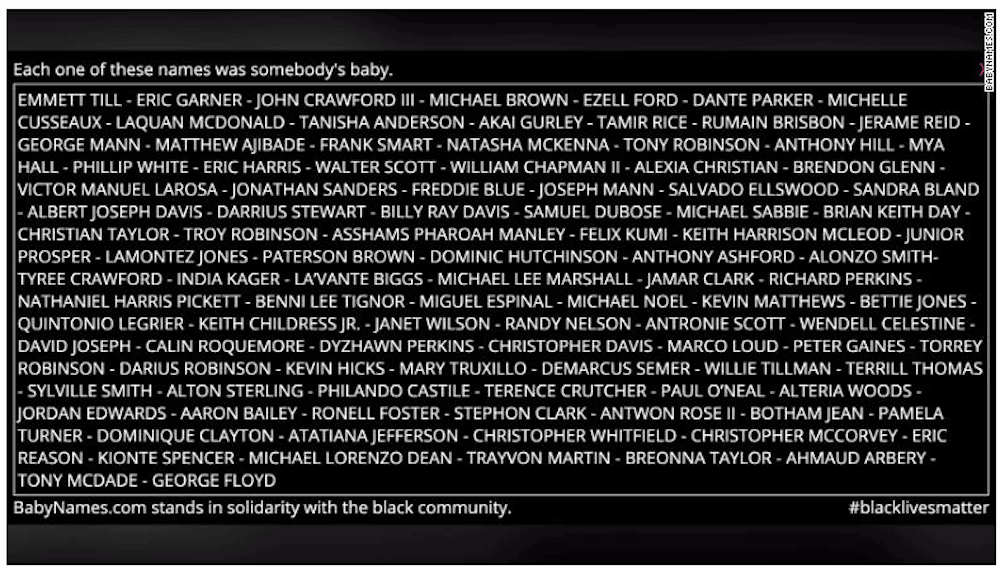This pregnant mother’s death highlights racial disparities in maternal care

Sha-Asia Washington should be alive today.
Sha-Asia Washington and her partner Juwan Lopez were so looking forward to being parents. When the 26-year-old Brooklyn-based paraprofessional educator found out she was pregnant, they were overjoyed.
The joy was captured in the couple’s many maternity photos—images that sadly would become the pictures media would use when reporting on her death.
As reported by Rolling Stone, Washington died in childbirth after going to Woodhull Medical Center in Brooklyn for a routine stress test. She was past her due date and her blood pressure was high. She was given Pitocin to induce labor, and at first everything seemed fine, as Lopez documented in a video he later shared to Instagram. Although hesitant to get an epidural when asked, Washington eventually did get one. Soon, chaos erupted in the hospital room and Washington was given an emergency C-section. She suffered cardiac arrest and died. Her daughter Khloe survived the traumatic birth.
Related: The White House has addressed Black maternal health—and it’s about time
NYC Health + Hospitals/Woodhull is conducting an internal in-depth quality review of the incident, a spokesperson tells Motherly.
They issued the following statement to Motherly via email: “Our heartfelt condolences are with the family, friends and community who bear the pain of this unspeakable loss. The persistently high rates of maternal mortality that disproportionately affects people of color is a grave, national crisis. Here in New York City, we will not stand for this status quo, and remain undeterred in our mission to eliminate structural inequities and guarantee comprehensive and quality care for all New Yorkers.”
It is important to understand what happened here, how a mother could go from chatting with her partner from her hospital bed to dying so quickly. We need to understand how the health care system failed Washington because we know that it is failing so many women like her every single day.
Black women in the United States are 3 to 4 times more likely than white women to die from pregnancy or childbirth-related causes. A large body of research has proven Black women are more likely to experience preventable maternal death compared to white women. The CDC estimates 60% of these deaths are preventable.
Lopez is now raising his baby girl as a single parent, something he never thought he would have to do.
“Your mommy would be so proud how active and alert you are princess,” he captioned a photo in which he’s seen pushing Khloe in her stroller.
data-instgrm-captioned data-instgrm-version=”4″ style=” background:#FFF; border:0; border-radius:3px; box-shadow:0 0 1px 0 rgba(0,0,0,0.5),0 1px 10px 0 rgba(0,0,0,0.15); margin: 1px; max-width:658px; padding:0; width:99.375%; width:-webkit-calc(100% – 2px); width:calc(100% – 2px);”>
Lopez is now part of a growing club that no parent wants to belong to. Partners are being forced to raise their children alone because the medical system is failing Black mothers and babies.
And, in April 2020, another 26-year-old New York mother, Amber Rose Issac, died in childbirth just days after tweeting: “Can’t wait to write a tell all about my experience during my last two trimesters dealing with incompetent doctors at Montefiore.”

Motherly sent multiple requests for information to the Montefiore Medical Center in the Bronx after Issac’s death. We have yet to receive a reply.
The hospital did reply to ABC News, telling the network in a statement, “Ninety-four percent of our deliveries are minority mothers, and Montefiore’s maternal mortality rate of 0.01 percent is lower than both New York City and national averages. Any maternal death is a tragedy.”
Issac’s partner, Bruce McIntyre, says Issac advocated for herself over and over again, but was ignored.

He says Issac asked for help during her prenatal care, concerned about her symptoms, but says her concerns were not addressed and she was neglected. She developed HELLP syndrome, but was not diagnosed until after her death.
“All of this was 100 percent preventable. All of it,” McIntyre told The Guardian. “I feel like she would have got more attentive care if she was a white mother, to be completely honest with you.”
Now, McIntyre is raising the couple’s son, Elias, alone.
Lopez and McIntyre join Charles Johnson IV, who is raising his two young sons without their mother, Kira. She died in April 2016, just one day after her youngest was born during a scheduled C-section. Kira was bleeding internally, something that was discovered too late.
data-instgrm-captioned data-instgrm-version=”4″ style=” background:#FFF; border:0; border-radius:3px; box-shadow:0 0 1px 0 rgba(0,0,0,0.5),0 1px 10px 0 rgba(0,0,0,0.15); margin: 1px; max-width:658px; padding:0; width:99.375%; width:-webkit-calc(100% – 2px); width:calc(100% – 2px);”>
“There is nothing I can do to bring Kira back,” Johnson said at the at a Million Moms March on Washington D.C. “But what I can do is to fight as hard as I possibly can to make sure we send mothers home with their babies.”
It is time for action. It is time for the entire United States to hear the pain of these fathers, partners and so many other families who are missing Black mothers who died unnecessarily.
After the deaths of Sha-Asia Washington and Amber Rose Issac, New York City doula Jess Pournaras launched a Change.org petition asking Gov. Andrew Cuomo to require New York’s State Hospitals “to Publish Data on Pregnancy Outcomes.”
“Transparency in racial disparities of pregnancy and birth outcomes is an essential step in ensuring better outcomes for all pregnant New Yorkers,” Pournaras writes.
America’s mothers need transparency, but also need lawmakers to hold the system accountable for the disproportionate rates of Black maternal death.
A version of this story was published July 13, 2020. It has been updated.





































